The Fall 2006 MeetingNorthern California/Nevada Section AAPTMenlo SchoolSaturday,
|
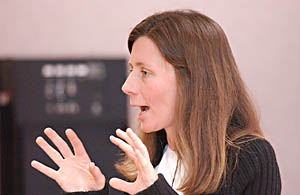 Invited Speaker Patricia Burchat, Stanford |
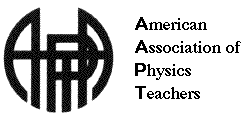
|
|
|
Local Host: Robin McGlohnrmcglohn@menloschool.org
|
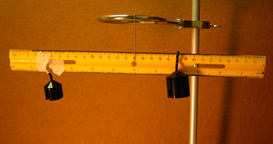
|
Friday Evening Social, November 3, 2006
|
|
424 Quartz Street Redwood City, CA 94062 Cheese, Crackers, and Man-Sodas 6:30 PM Program: 7:30 PM Physics of Steam Trains by Lewis Epstein Come join us and have a brew or two. Pablo will show you his Lionel trains, momentum conservation apparatus (pool table), as well as his Apollo 13 pinball machine. If there's a quorum, Lew will give a short talk on the Physics of Steam Trains! Don't be a party pooper! |
DirectionsTake the Whipple Exit from 101, westward (from either direction). As soon as you cross the railroad tracks, turn left onto El Camino Real. Go for about a mile and turn right onto Jefferson Avenue. Go for about 1.1 miles and turn right onto Quartz Street. Go 2 long blocks up the hill until you see a white mailbox, on the left, in the ivy fence that says "424". Park on the street and walk down the driveway; Rancho Robinson is behind the house on the street. Lost? Call (650) 400-9425 for help. |
Saturday Morning, November 4, 2006Martin Lecture Hall |
7:45 Registration, Coffee, Donuts, and other culinary delights.What a deal! The fee is waived for first-time attendees and students! The rest of us pay only $20 (and that includes lunch!). A bargain at twice the price! 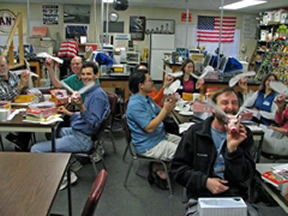
8:55 Welcome and Announcements9:00 Show & TellShare your favorite demonstration or teaching tip. Since new teachers and section members will be at this meeting, you are encouraged to dust off some of your oldies but goodies. If you have handouts, please bring 75 copies. Pasco will present of their latest products. Time limit is 5 minutes per person. 10:00 Invited Speaker
|
Afternoon Program: Contributed Papers |
2:00
|
It is important that students recognize that science is an ongoing evolution of inquiry and not some kind of infallible religion. To promote critical thinking with regard to physics, seven historical examples are discussed and a relevant and significant (but relatively unknown) 20th century controversy between competing models will be described. | |
2:20
Gary Latshaw • Foothill College, glatshaw@gmail.com
| There are many opportunities within the standard curriculum for high-school and college-physics classes to explain how issues involved with global warming and alternative energy sources can be understood in terms of basic physics. This lecture will present several examples and encourage the use of materials available on the website teachglobalwarming.org. Three examples are: (1) The radiation energy balance of the earth as it absorbs sunlight and radiates away thermal energy can be included in introductory thermodynamics. (2) The impact of melting of floating ice versus terrestrial ice can be presented when discussing buoyancy. (3) The power (which is the cube of the wind velocity) that can be generated by wind turbines can be included in describing mechanics. | |
2:40
|
The physics department at UC Berkeley recently introduced a 3-week unit on computerized data acquisition, signal processing, and control into the junior-level electronics lab course. Students learn to program virtual instruments in the National Instruments LabVIEW graphical programming application. After an on-line LabVIEW tutorial, students construct a simple amplifier circuit and write a program to measure Boltzmann's constant from Johnson noise in a resistor. In the 2nd week, students build a scaled resistor digital to analog converter (DAC) and program an analog to digital converter (ADC). In 3rd week, students explore digital filtering techniques and write a proportional-integral-differential (PID) loop to control a magnetic levitator. Many students use LabVIEW for their final course project and subsequent research experiences. We will share lessons learned in adding 18 computer workstations and three weeks of material to an already-packed room and course. |
|
3:00
|
We have written a freely available alternative textbook for high school and community college physics students and teachers. The textbook is in partnership with the Santa Cruz Institute of Particle Physics Teacher Outreach Program. The textbook can be easily printed and bound from source PDF documents at any copy shop. It is lightweight, easy to bring to and from class, and contains a variety of problems suitable for regular, honors and AP physics. The People's Physics Book is an inexpensive (free except for copying costs), easy to use and practical study guide aimed for use by students, who have a knowledgeable teacher to guide them. The book focuses on the physics alone and brings out the beauty and universality of the physics (example: we do not spend time rewriting the same equation 5 different ways--we assume the teacher will teach the students how to rearrange equations). The book does not go into great or repetitious detail; nor have a lot of history or applications, neither does it offer solved problems; thus it is not intended to replace the teacher and/or regular hardcover textbooks. The book is ideal to be used to accompany a conceptual physics book or a website-like the physics classroom. We will discuss the idea behind the book; how to obtain it; how to use the book in a variety of classes; how to improve and contribute to future editions of the book; and how the book can be used in conjunction with standard textbooks and online resources. |
|
3:20
|
When thin soap films are formed on a square and rectangular parallelepiped wire frame, a flat film rectangle is formed parallel to one side of the wire frame. The dimensions of this rectangle depend on the dimensions of the wire frame. Classical plateau theory gives wrong dimensions for this rectangle that are especially bad for a cubical parallelepiped wire frame. Classical minimum soap film area theory also gives very different wrong dimensions that are especially bad for the cubical wire frame. A new combination theory will be given that agrees very well with experimental results for every square and rectangular parallelepiped wire frame. |
|
3:40
|
Think you need motion detectors to have students analyze motion with technology? Instead, try it with the relatively inexpensive tape timer and the graphing calculators most of your students already have for their math classes. This talk will present the basics of how to use data tables, formulas, and curve matching on a TI 83/84, including graphing of p/t, v/t, and calculating the slope of each. Experiments include simple one-dimensional motion, and acceleration of a system that includes the traditional "falling mass accelerating a cart." A double-sided "How-To" manual that includes the basic steps will be distributed. Discussion of how to introduce your students to the operations of the tape timer will also be included. |
|
4:00
|
We're five years into the annual administration of the California Standards Test (CST) in 9–12 Physics. Has the state's adoption of standards and assessments affected your instruction? If so, how? If not, why not? How much do you know about your school's performance on the Physics CST? Does your district provide you with meaningful statistics on your students' performance? Let's get together and discuss the issues. This session will be more of a "crackelbarrel" discussion than a presentation. | |
End of meeting |
Updated October 27, 2006
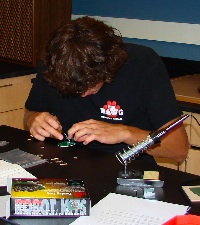
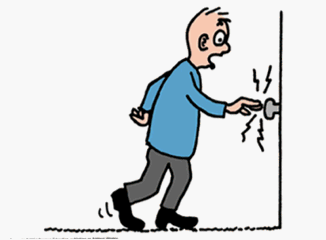 The Santa Cruz Institute for Particle Physics'
Outreach Program gets students electrified about
learning physics using a Tesla Coil which generates dazzling electrical arcs about
5 feet (1.5 meters) in length! See them demonstrate their Tesla Coil and
how to get students charged up to learn about physics.
The Santa Cruz Institute for Particle Physics'
Outreach Program gets students electrified about
learning physics using a Tesla Coil which generates dazzling electrical arcs about
5 feet (1.5 meters) in length! See them demonstrate their Tesla Coil and
how to get students charged up to learn about physics.